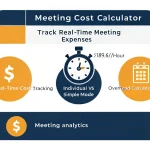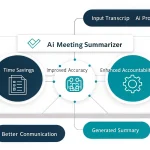Debate Analysis Tool
Is this tool helpful?
How to Use the Debate Analysis Tool Effectively
- Enter the Debate Transcript: Paste the full text of the debate you want to analyze. For example, you could input a transcript from a university symposium on renewable energy policies or a panel discussion on urban development challenges.
- Provide Participant Names: List the debate participants’ names separated by commas. For example, use “Alice Johnson, Dr. Mark Lee” for an academic setting or “Candidate X, Candidate Y” for a local election debate.
- Click “Analyze Debate”: After filling both fields, click the Analyze Debate button to start processing.
- Review the Results: The tool will generate a detailed report highlighting key arguments, emotional tone, points of agreement and disagreement, and overall debate quality.
- Copy the Analysis (Optional): You can copy the detailed results to your clipboard for easy sharing or further study by selecting and copying the text manually.
Introduction to the Debate Analysis Tool: Unlock Deeper Insights from Discussions
The Debate Analysis Tool is an AI-powered platform designed to help you understand debates more thoroughly and efficiently. Whether you’re analyzing political discussions, academic arguments, or public forums, this tool breaks down complex dialogues into clear, structured insights. It highlights key arguments, emotional influences, and interaction dynamics, providing you with an objective perspective on the debate’s quality and content.
By using this tool, you save valuable time while gaining a richer understanding of the subject matter and participants’ positions. It supports enhanced critical thinking, better media literacy, and clearer identification of agreement, disagreement, and misunderstandings within debates.
Practical Applications of the Debate Analysis Tool in Everyday and Professional Contexts
1. Educational Use
Students and educators can analyze historical or current debates to improve critical thinking and comprehension skills.
- Compare interpretations of famous debates, such as legislative hearings or scientific panel discussions.
- Identify rhetorical techniques, logical strengths, and fallacies for classroom discussions.
2. Journalism and News Reporting
Reporters can quickly dissect complex debates to fact-check, highlight key points, and provide balanced coverage.
- Analyze political debates in real-time to capture essential arguments and emotional tones.
- Create concise summaries for readers without sacrificing depth or accuracy.
3. Business Strategy and Meetings
Companies can analyze transcripts from meetings or negotiations to uncover hidden concerns, consensus, or misunderstandings.
- Identify recurring themes or points of tension from stakeholder discussions.
- Enhance communication strategies and decision-making processes.
4. Legal and Policy Analysis
Legal professionals and policymakers can break down complex oral arguments and public hearings to prepare stronger cases or draft informed policies.
- Highlight critical arguments and emotional appeals in court proceedings.
- Summarize stakeholder positions in legislative debates for clearer policy formulation.
Key Features and Metrics in Debate Analysis
- Insightfulness Score: Rates the intellectual depth and quality of the debate on a scale from 0 to 10.
- Emotionality Score: Measures the intensity of emotions expressed, rated from 0 to 5.
- Participant Emotionality: Shows emotional scores for each individual debater to gauge tone differences.
- Argument Breakdown: Highlights central arguments, external references, and fact-checking details.
- Agreement vs. Disagreement: Identifies where participants find consensus or persistent contention.
- Misunderstanding Detection: Pinpoints potential miscommunications and their possible causes.
- Learning Summary: Extracts actionable insights and key takeaways from the debate.
Benefits of Using the Debate Analysis Tool
Improves Your Critical Thinking Skills
The tool helps you evaluate arguments clearly by exposing logical strengths and weaknesses, making you a more discerning listener and reader.
Expands Your Perspective
By offering unbiased analysis, you engage with different viewpoints fairly, challenging your assumptions and broadening your understanding.
Enhances Media Literacy
Learn to distinguish emotional appeals from factual claims and recognize credible sources, improving how you interpret public discussions.
Saves Time with Concise Summaries
Access quick yet thorough debate summaries that help you stay informed without investing hours in watching or reading full transcripts.
Supports Research and Writing
Use the clear breakdowns to build well-informed articles, papers, and reports based on structured analyses.
Addressing Common Challenges with the Debate Analysis Tool
Challenge: Managing Information Overload
You can quickly digest multiple debate transcripts without feeling overwhelmed, allowing you to compare viewpoints efficiently.
Challenge: Overcoming Bias
The tool offers neutral insights, helping you move beyond personal biases to get a balanced view of arguments.
Challenge: Simplifying Complex Arguments
It breaks down complicated debates into understandable parts, clarifying specialized terms and concepts.
Frequently Asked Questions (FAQ)
Can the Debate Analysis Tool analyze debates in languages other than English?
Currently, the tool supports English-only debates. Plans for additional languages are in development.
How long does analysis usually take?
Analysis typically completes within a few minutes, depending on transcript length and complexity.
Can I analyze informal conversations?
The tool works best with structured debates but can provide limited insights on informal discussions.
How is the Insightfulness Score calculated?
This score reflects idea novelty, argument depth, mutual understanding, and the debate’s overall intellectual value.
Can I save or export the analysis?
You can copy the full analysis text and paste it into any document or note-taking application.
Is there a limit on how many debates I can analyze?
There is no set limit, but use the tool responsibly to maintain performance for all users.
Can it handle debates with multiple participants?
Yes. Include all participant names separated by commas, and the tool will analyze their interactions accordingly.
Can the tool analyze video or audio debates directly?
No. You need to provide a text transcript before analysis.
How does it handle specialized vocabulary?
The tool explains complex terms as needed, making specialized debates easier to follow.
Can I use the analysis in my own work?
Yes, you can. Please cite the Debate Analysis Tool as your source when using the analysis in publications or presentations.
Using the Debate Analysis Tool helps you enhance your understanding of important discussions, sharpen critical thinking skills, and gain clear, objective insights from any debate transcript you analyze. Whether for research, education, journalism, or personal interest, this tool provides a reliable way to dissect conversations and deepen your comprehension efficiently.
Important Disclaimer
The calculations, results, and content provided by our tools are not guaranteed to be accurate, complete, or reliable. Users are responsible for verifying and interpreting the results. Our content and tools may contain errors, biases, or inconsistencies. Do not enter personal data, sensitive information, or personally identifiable information in our web forms or tools. Such data entry violates our terms of service and may result in unauthorized disclosure to third parties. We reserve the right to save inputs and outputs from our tools for the purposes of error debugging, bias identification, and performance improvement. External companies providing AI models used in our tools may also save and process data in accordance with their own policies. By using our tools, you consent to this data collection and processing. We reserve the right to limit the usage of our tools based on current usability factors.







